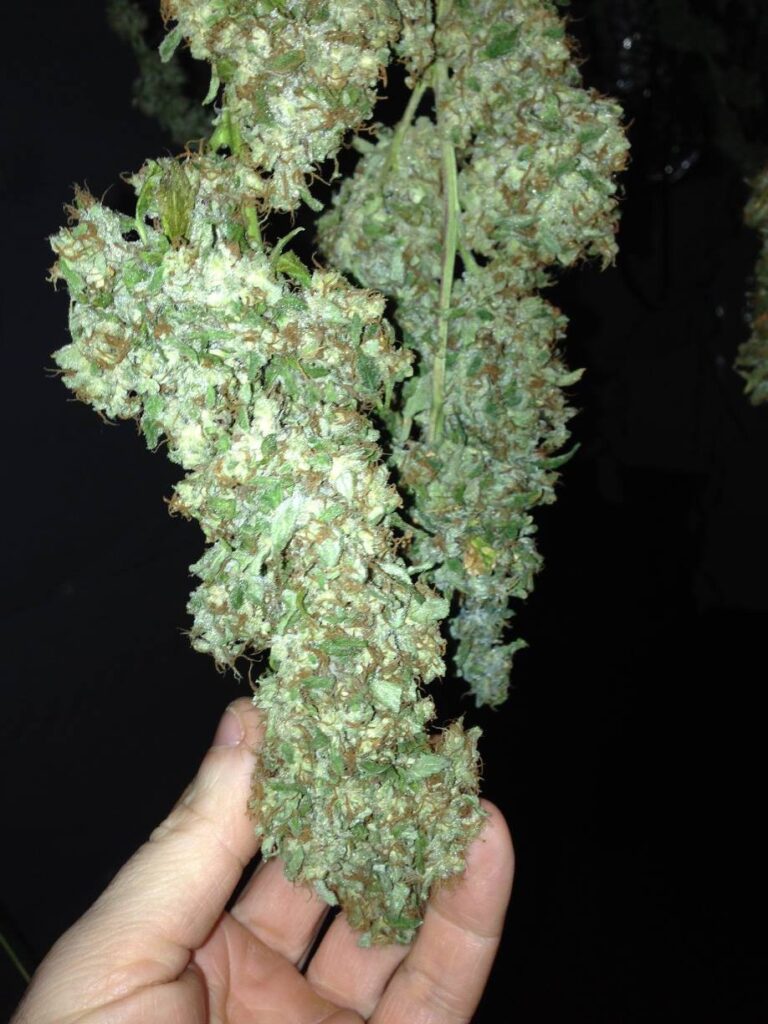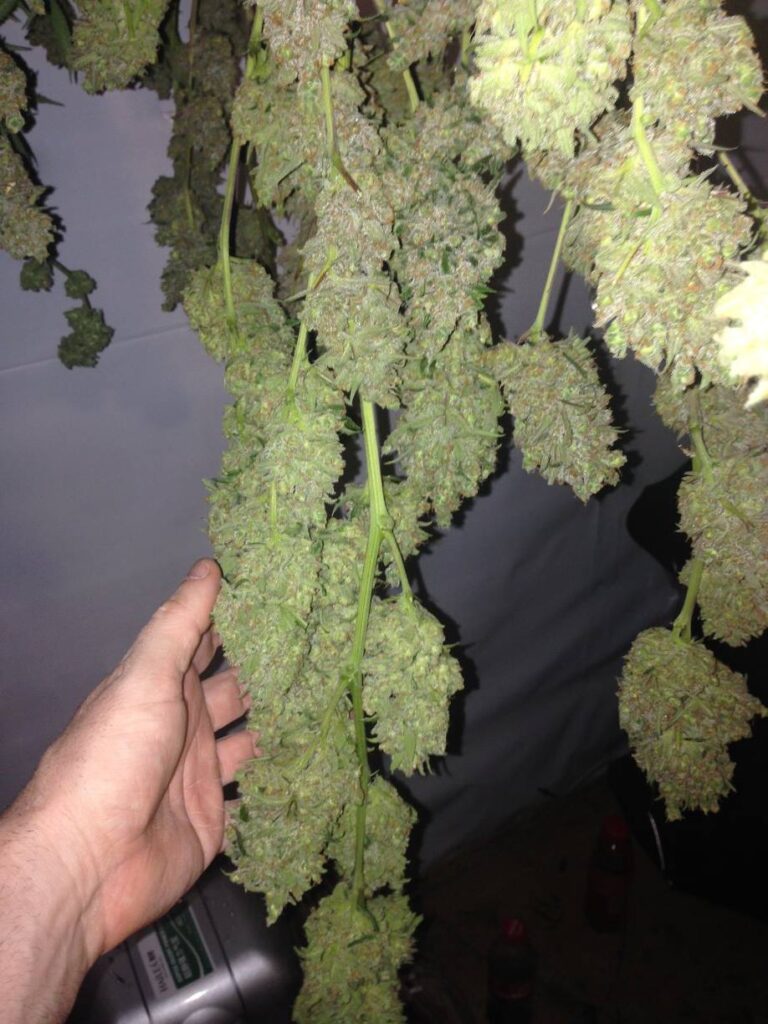Medicinal Cannabis Series
Part 3: Fibromyalgia Pain, and How To Get Relief Through Cannabis
Understanding Fibromyalgia Pain
Fibromyalgia is a condition defined by pain that never quite goes away. It can affect the entire body, muscles, joints, nerves, and often leaves people feeling exhausted even after rest. For many, it brings not only physical discomfort, but also mental and emotional strain. The constant ache, sensitivity to touch, brain fog, and disturbed sleep can make everyday life feel like an uphill climb.
Unlike many chronic pain conditions, fibromyalgia doesn’t cause visible damage to the body’s tissues. Instead, it’s believed to involve overactive pain signalling in the nervous system, the brain and spinal cord misinterpreting normal sensations as pain. This means that even small triggers can feel amplified, leaving sufferers in a state of continuous tension and fatigue.
Current treatments, such as antidepressants, anticonvulsants, or painkillers, can sometimes help but are often only partially effective, and they may bring side effects that make day-to-day living even harder. That’s why more people and researchers are looking toward cannabis as a possible way to help manage symptoms more naturally.

Cannabis works differently from typical pain medicines. It interacts with the body’s endocannabinoid system (ECS), a built-in network that helps control pain, mood, sleep, and stress. For those with fibromyalgia, cannabis may offer a gentler way to restore balance by reducing nerve overactivity, calming inflammation, and promoting better rest without heavy sedation.
How Cannabis May Help Fibromyalgia Pain
The human body has a built-in network designed to keep pain, mood, and inflammation in balance, it’s called the endocannabinoid system (ECS). This system uses receptors (CB₁ and CB₂) found throughout the brain, nervous system, and immune cells. When something disrupts that balance, such as chronic stress, inflammation, or nerve dysfunction, the ECS may struggle to regulate signals properly, leading to symptoms like widespread pain, fatigue, and anxiety.
Cannabis contains compounds known as phytocannabinoids, which can interact with these same receptors and help the body return to equilibrium.
The two best-known cannabinoids, THC and CBD, affect the ECS in different but complementary ways:
- THC (Δ⁹-tetrahydrocannabinol): Activates CB₁ receptors in the brain and spinal cord, helping to reduce pain perception and muscle tightness. It can also encourage relaxation and help restore normal sleep patterns.
- CBD (Cannabidiol): Works more subtly, influencing CB₂ receptors in the immune system as well as serotonin and vanilloid receptors. It’s non-intoxicating and can reduce inflammation, nerve irritation, and anxiety, all of which can amplify fibromyalgia pain.
Other lesser-known cannabinoids such as CBG (Cannabigerol) and CBC (Cannabichromene) are also under study for their anti-inflammatory and neuroprotective properties, potentially adding depth to symptom management.

But cannabinoids are only half the story.
Cannabis also produces aromatic molecules called terpenes, which do more than just give the plant its scent, they contribute to its therapeutic effects. When combined with cannabinoids, they create what’s known as the entourage effect, enhancing and balancing each other’s actions.
Here are some of the most relevant terpenes for fibromyalgia research:
| Terpene | Typical Effect | Potential Role in Fibromyalgia Relief |
| Myrcene | Relaxing, sedative | Helps reduce muscle pain and improve sleep |
| β-Caryophyllene | Anti-inflammatory | Soothes nerve pain by binding to CB₂ receptors |
| Linalool | Calming, anti-anxiety | Reduces stress and muscle tension; aids rest |
| Limonene | Uplifting, anti-depressant | Helps boost mood and combat fatigue |
| Humulene | Anti-inflammatory | May help regulate immune and pain responses |
By combining the right cannabinoids and terpenes, cannabis can provide a multi-layered form of relief, easing pain, calming the mind, and promoting better sleep without harsh sedatives. For many living with fibromyalgia, that balance is exactly what has been missing from conventional treatment options.
Original Sensible Seeds Strains Relevant to Fibromyalgia
Managing fibromyalgia means addressing several issues at once, pain, fatigue, poor sleep, and anxiety. Unlike conditions with a single cause, fibromyalgia affects both the body and the nervous system, which is why a strain’s full chemical profile matters.
At Original Sensible Seeds, the strains most suitable for fibromyalgia research are those that combine pain relief, anti-inflammatory properties, muscle relaxation, and restorative calm, without overwhelming the user.
These profiles typically feature moderate-to-high THC levels with supporting CBD or CBG, and terpenes like myrcene, caryophyllene, linalool, and limonene to help regulate both physical and emotional symptoms.
Grandaddy Black (FEM)
- Profile: 95% Indica | THC ~23%
- Terpenes: Myrcene, Caryophyllene, Linalool
- Why It’s Relevant: Deeply relaxing and sedative, this strain soothes pain, eases muscle tension, and supports sleep, ideal for evening use when the day’s fatigue and aches are at their worst.
Pure Kush (FEM)
- Profile: 100% Indica | THC ~22%
- Terpenes: Myrcene, Limonene, Caryophyllene
- Why It’s Relevant: Provides body calm and emotional balance. The limonene uplifts mood while myrcene and caryophyllene work to reduce pain and inflammation.
Do-Si-Dos OG (FEM)
- Profile: 70% Indica | THC ~28%
- Terpenes: Limonene, Caryophyllene, Myrcene
- Why It’s Relevant: Relieves both emotional and physical strain. Limonene lifts mood, caryophyllene supports pain relief, and myrcene promotes rest — perfect for night-time use.
Gelato (FEM)
- Profile: 55% Indica / 45% Sativa | THC ~25%
- Terpenes: Limonene, Caryophyllene
- Why It’s Relevant: Helps combat fatigue and low mood while providing mild pain relief. A good choice for daytime balance without heavy sedation.
Gelato Auto (AUTO)
- Profile: 60% Indica / 40% Sativa | THC ~20%
- Terpenes: Caryophyllene, Limonene
- Why It’s Relevant: A balanced, easy-to-manage version of Gelato — smooth energy for the day, gentle relaxation for the evening.
Bruce Banner 3 Auto (AUTO)
- Profile: 65% Sativa / 35% Indica | THC ~28%
- Terpenes: Caryophyllene, Myrcene, Limonene
- Why It’s Relevant: Uplifting yet grounding. Helps with daytime energy and focus while easing body discomfort and inflammation.
Wedding Cake Auto (AUTO)
- Profile: 70% Indica / 30% Sativa | THC ~20%
- Terpenes: Limonene, Caryophyllene, Myrcene
- Why It’s Relevant: Soothing and restorative, Wedding Cake Auto helps calm nerves, reduce pain, and improve sleep.
Blackwater (FEM)
- Profile: 90% Indica | THC ~28%
- Terpenes: Myrcene, Linalool, Caryophyllene
- Why It’s Relevant: Excellent for night-time use. Calms the nervous system, supports deep rest, and reduces widespread pain sensitivity.
Key Strains at a Glance
| Strain | Primary Benefit | THC / CBD Profile | Dominant Terpenes | Ideal Use |
| Grandaddy Black (FEM) | Pain & sleep support | THC 23%, CBD trace | Myrcene, Caryophyllene, Linalool | Night – body pain & rest |
| Pure Kush (FEM) | Relaxation & inflammation | THC 22%, CBD trace | Myrcene, Limonene, Caryophyllene | Evening – tension & calm |
| Do-Si-Dos OG (FEM) | Stress & muscle pain | THC 28%, CBD trace | Limonene, Caryophyllene, Myrcene | Night – recovery & relaxation |
| Gelato (FEM) | Mood & energy balance | THC 25%, CBD trace | Limonene, Caryophyllene | Day – fatigue & anxiety |
| Gelato (AUTO) | Gentle energy & calm | THC 20%, CBD trace | Caryophyllene, Limonene | Day – steady focus |
| Bruce Banner 3 (AUTO) | Pain & motivation | THC 23%, CBD trace | Caryophyllene, Myrcene, Limonene | Day – fatigue & discomfort |
| Wedding Cake Auto (AUTO) | Pain & sleep | THC 2%, CBD trace | Limonene, Caryophyllene, Myrcene | Evening – rest & recovery |
| Blackwater (FEM) | Deep relaxation & pain relief | THC 28%, CBD trace | Myrcene, Linalool, Caryophyllene | Night – pain & insomnia |
Research Insight and Summary
Fibromyalgia is often described as an “invisible illness,” but its effects are deeply real. The combination of widespread pain, fatigue, and emotional stress can make every day feel like a battle. What makes cannabis research so interesting in this field is that it doesn’t simply target one symptom, it may influence many of them at once.
Studies have shown that cannabinoids like THC and CBD may reduce nerve hypersensitivity, one of the key drivers of fibromyalgia pain. By regulating how pain signals are transmitted through the nervous system, cannabis can help calm the overactivity that causes normal sensations to feel amplified.
In addition, CBD, CBG, and linalool-rich terpenes may help restore balance in the autonomic nervous system, supporting better sleep, reduced anxiety, and improved stress tolerance, all essential to managing fibromyalgia symptoms.
This multi-layered interaction, known as the entourage effect, allows cannabinoids and terpenes to work synergistically. For example, myrcene and caryophyllene may enhance the pain-relieving properties of THC, while linalool and limonene can uplift mood and improve relaxation. Together, they provide a more holistic approach to comfort and recovery.

The Original Sensible Seeds strains identified for fibromyalgia, including Grandaddy Black, Do-Si-Dos OG, Gelato, and Pure Kush, were selected for their reliable balance of cannabinoids and terpenes. Their consistent chemistry makes them promising candidates for research into pain modulation, muscle relaxation, and emotional stability.
Cannabis will not cure fibromyalgia, but for many people it may help make life more manageable, softening the pain, improving sleep, and restoring energy over time. By understanding which strain profiles offer the right mix of relief and calm, both patients and researchers can explore this natural option with greater confidence and purpose.
Disclaimer
This article is intended for research and educational purposes only.
It does not constitute medical advice, nor is it a substitute for professional diagnosis or treatment.
Cannabis affects individuals differently, and its use, whether medicinal or otherwise, should always comply with local laws and be discussed with a qualified healthcare professional.
If you are currently undergoing treatment or considering cannabis as part of a care plan, please consult your doctor or pharmacist before making any changes.
Check out our Ultimate Grow Guide for great tips and tricks for bigger yields and better quality.







